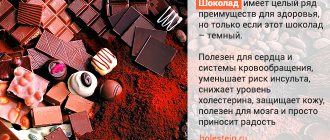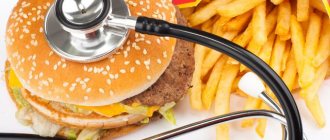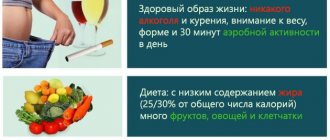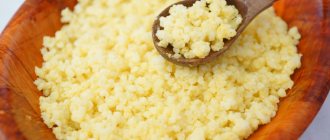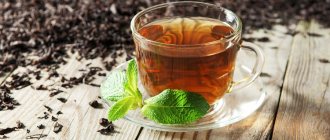Like other animal products, it is not without cholesterol, which is present to a greater or lesser extent in all varieties. However, nutritionists believe that completely eliminating cheese from the diet would be a mistake.
Composition of cheese, its benefits and harm to the human body
Cheese varieties differ in composition and content of both beneficial and harmful components. But they are all united by a high level of fat content (up to 60% of the total weight), a large amount of protein (up to 30%), minimal content, and sometimes the complete absence of carbohydrates.
Cheeses are rich in:
- vitamins A, C, C, E;
- potassium;
- phosphorus and calcium;
- manganese and sodium;
- zinc, copper and iron;
- amino acids - lysine, methionine, tryptophan, valine, phenylalanine and leucine.
Thus, the benefit of cheese lies in its medicinal and dietary value, which is determined by the content of proteins, vitamins, amino acids and minerals. All this is necessary for the body because:
Allows you to generate energy to support life processes.- Improves the condition of bone tissue.
- Supports vision.
- Increases the growth activity of hair and nails, while strengthening their structure.
- Normalizes digestion processes.
- Promotes healthy hormone synthesis.
- Strengthens the nervous system and immunity.
Unfortunately, in some cases, consuming cheese is harmful . This happens when:
- people suffering from vascular problems and excess cholesterol prefer fatty products without limiting themselves in quantity;
- Cheese lovers with gastritis and stomach ulcers continue to consume it frequently.
To enjoy a treat without worrying about the consequences, it is important to listen to the opinion of your doctor and follow his recommendations.
Medication correction
- stage of exacerbation of hepatitis, liver cirrhosis;
- pregnancy, breastfeeding;
- age under 18 years;
- exacerbation of kidney diseases;
- individual intolerance;
- simultaneous intake of alcohol.
| Name of the drug | Dosage, mg | Minimum dose, mg | Average dose, mg | High dose, mg | price, rub. |
| Simvastatin (Zocor, Vasilip, Simgal, Simvacard) | 10, 20 | 10 | 20-40 | 40 | 60-300 |
| Lovastatin (Mevacor, Choletar, Medostatin) | 20, 40 | 20 | 40 | 40-60 | From 500 |
| Pravastatin (Lipostat) | 10, 20, 40 | 10-20 | 40-80 | 60 | From 700 |
| Fluvastatin | 20, 40 | 20 | 40 | 40-80 | From 2000 |
| Atorvastatin (Liprimar, Atoris, Tulip, Torvacard) | 10, 20, 40, 80 | 10 | 10-20 | 40-80 | 130-600 |
| Rosuvastatin | 5, 10, 20, 40 | 5 | 5-10 | 20-40 | 300-1000 |
Cholesterol content in cheese
It is believed that cholesterol-free cheese does not exist, and this is practically true. The exception is tofu, a plant-based product made from so-called soy milk. Having 4% fat content, it is absolutely free of harmful components.
This is what tofu cheese looks like.
As for traditional varieties, their cholesterol level depends on the fat content of the milk used in the recipe, as well as on the preparation technology. The following are used in cheese production:
- Milk . In addition to cow, they take sheep, goat and buffalo - separately or in combination. Accordingly, each of them has a different fat content. But it is animal fats that have an extremely negative effect on cholesterol levels.
- Sourdough . To maintain the fermentation of the mass, modern cheese makers use lactic acid microorganisms. With this type of sourdough, the final product is dense and tasty;
- Rennet component . It is he who transforms liquid milk into strong, tasty and aromatic cheese. Usually, enzymes obtained from cow stomachs or their synthetic substitutes are used for this;
- Salt and sometimes spices.
In accordance with the accepted classification of cheeses according to the volume of fat in their composition, they are divided into:
- low fat (less than 20%);
- lungs (21-30%);
- medium fat (31-40%);
- normal (41-50%);
- fatty (51-60%);
- double fat (61-75%);
- triple fat content (76% and above);
The least high-calorie and harmful varieties for people with high cholesterol levels are made from skim milk or whey, and the most satisfying ones are made from pure cream or a mixture thereof with whole milk.
The table provides data on the amount of cholesterol and fat in different types of cheese:
| Variety | Fat content, % | Cholesterol (mg per 100g) |
| Home | 0,6; 4 | 1; 11 |
| Chechil | 5; 10 | until 23 |
| Sheep | 20 | 12 |
| Fused | 20; 60 | 23; 80 |
| Tilsit | 30; 45 | 37; 60 |
| Gouda | 45 | 114 |
| Camembert | 30; 45; 60 | 38; 62; 95 |
| Swiss Gruyere | 50 | 110 |
| Soviet | 50 | 96 |
| Creamy | 60 | 105 |
| Dutch | 50 | 510 |
So:
- The least amount of cholesterol is in delicate homemade cheeses, which are made from low-fat milk.
- The greatest is in mature, and therefore hard and high-calorie, varieties.
Unfortunately, the most beloved cheeses in Russia are characterized by high cholesterol levels.
In case of atherosclerotic disease, nutritionists advise adhering to a diet so that the daily amount of harmful fats, and therefore cholesterol, is half less (about 150 mg) than the norm for healthy people.
To enjoy your favorite product without unpleasant consequences, it is better to choose processed cheeses. During their production, the amount of a dangerous biochemical substance drops by one and a half to two times in comparison with the original product, while the taste does not become worse. Unfortunately, the amount of vitamins and microelements is also decreasing.
Names of the most dangerous products
The abundance of gourmet cheeses on store shelves creates the temptation to treat yourself to a tasty piece, despite a strict diet and doctor’s prohibitions.
When choosing a delicacy, it is worth remembering that varieties with a fat content of 40% or higher are dangerous for people at risk of developing atherosclerosis. In addition to those already mentioned above, these are:
- Roquefort and Smolensky, Okhotnichy and Zakusochny (45%);
- Altai and Moscow (50%);
- smoked cheeses (55%);
- any others with a large proportion of fat.
General recommendations
- The daily energy value should not exceed 2600 Kcal.
- The recommended protein content is 90 g (of which 55-60% is allocated to animal proteins).
- Daily fat consumption is no more than 80 g (of which no more than 60% is allocated to animal proteins).
- Carbohydrates – no more than 350 g.
- The number of meals per day is 5-6.
- No more than 5 mg of salt per day.
- The amount of harmful trans fats is no more than 1% of the total diet.
- The daily diet should contain 30-45 grams of plant fiber, 200 g of fresh vegetables, 200 g of fresh fruit.
- Consume fish every 2-3 days.
- No more than 20 g of alcohol per day for men and no more than 10 g for women.
What varieties can you eat if you have high cholesterol?
The best option would be low-fat, light and medium-fat, the presence of which in the diet will be a pleasant and healthy addition. Which variety to choose depends on preference.
Adyghe
This is a Caucasian pickled cheese with a fat content of up to 40%, the production of which does not require long ripening. Traditionally it is made from sheep's milk with the addition of cow's milk.
Adyghe cheese has a soft, elastic structure and a pleasant milky taste. It has a reputation as an ideal dietary product. This is not surprising, because 100 grams of it contain:
- A third of the daily requirement of proteins and amino acids.
- Almost 90% of the daily amount of polyunsaturated (healthy) fatty acids, which increase the level of HDL - “good” cholesterol, which contributes to the faster elimination of “bad” cholesterol - LDL.
The average price of such cheese in Moscow supermarkets is about 500 rubles per 1 kg.
Ricotta
This is an Italian variety. Its main difference is that the raw material is not whole milk, but whey obtained during the fermentation of other cheeses. Ricotta has a sweet taste and delicate structure, so it is used for dessert dishes and in baked goods.
Since the original product on which Ricotta is made has a low fat content - from 8% to 24%, the cheese is recommended for people suffering from disorders of the cardiovascular system.
Soft Ricotta cheese is offered on Moscow Internet resources at a price of 110 rubles per glass, which contains 180 g of the product.
Suluguni
This is the name of another favorite Caucasian cheese, which belongs to the category of pickled cheeses. It is made from the milk of cow, buffalo, goat or sheep.
The benefits of suluguni are due to proteins of plant origin, as well as amino acids in its composition, which make the product a favorite among vegetarians. Consumption of such cheese does not increase the risk of developing atherosclerosis caused by an abundance of bad cholesterol. The amino acids in its composition have a positive effect on the immune system, stimulate hemoglobin synthesis, and most importantly, dilate blood vessels, lower blood pressure, cholesterol and triglyceride levels.
Suluguni owes these wonderful qualities to vitamin PP (nicotinic acid).
The price of the product in Moscow online stores is from 600 rubles per kilogram.
Mozzarella
This is another variety of Italian cheese with a fat content of only 20 g per 100 g of product.
Light Mozzarella is made exclusively from fresh milk, with the addition of rennet. The result is a cheese rich in:
- vitamins and antioxidants;
- omega-3 polyunsaturated beneficial acids.
It has extremely low cholesterol content, so the product is approved for people suffering from atherosclerosis.
The cost of cheese in Moscow is about 1000 rubles. for 1 kg.
Brynza
Brine cheese of oriental origin, which is made from cow, buffalo and sheep milk.
Its fat content is only 20-25%. The healthiest cheese, with a minimum of cholesterol, is recognized to be the one that has lain in brine for 40 to 50 days. Cheese goes perfectly with bread and fresh vegetables, and is harmoniously present in salads.
The price of cheese on Moscow online resources is from 500 rubles. for 1 kg
Thus, you can eat cheese if you have high cholesterol, the main thing is to choose the right product and not exceed the permissible weekly amount.
Why is it important to diet
Cholesterol is an organic compound consisting of a fatty alcohol. The substance is mostly produced by the liver system of the body, and comes from the outside along with food in relatively small proportions (only 20–25%). In itself, this compound cannot be harmful or beneficial; it is intended for the synthesis of protein metabolism and the formation of cell structure.
But as the amount of cholesterol in the body increases, it begins to be deposited on the vascular walls, eventually leading to the growth of plaques that clog capillaries and interfere with proper blood flow. After 50 years, this state of affairs becomes dangerous for a person: clogged vessels cannot fully supply internal organs and the brain with blood, which is why the risk of heart attack and stroke increases in old age.
And if the body can fight a lack of cholesterol on its own, then an excess of the substance requires a change in diet and habitual (usually not very correct) lifestyle
Why is proper and healthy nutrition so important for high cholesterol:
promotes the removal of decay products, toxins and toxins accumulated in the intestinal tissues from the body; helps to lose weight, which is important for high cholesterol - almost all obese people have problems with blood vessels, high blood pressure and suffer from cardiovascular pathologies; helps prevent the development of atherosclerosis in women over fifty years of age - during menopause, estrogen production decreases, which is why “harmful” cholesterol begins to actively accumulate on the vascular walls; indirectly participates in the treatment of concomitant diseases - the gastrointestinal tract (gastrointestinal tract), diabetes, hypertension. To begin the fight against cholesterol, it is important not only to understand the principles of proper nutrition, but also to give up bad habits
Vessels, already narrowed due to the deposition of cholesterol plaques, experience additional spasm when tobacco tar and ethyl alcohol enter the blood
To begin the fight against cholesterol, it is important not only to understand the principles of proper nutrition, but also to give up bad habits. Vessels, already narrowed due to the deposition of cholesterol plaques, experience additional spasm when tobacco tar and ethyl alcohol enter the blood. Only an integrated approach, including diet, quitting smoking and alcohol, providing the body with stable physical activity and frequent exposure to fresh air, can qualitatively reduce blood cholesterol levels
If the doctor has prescribed medications at the same time, the recommendations must be strictly followed.
Only an integrated approach, including diet, quitting smoking and alcohol, providing the body with stable physical activity and frequent exposure to fresh air, can qualitatively reduce blood cholesterol levels. If the doctor has prescribed medications at the same time, the recommendations must be strictly followed.
Acceptable weekly product norm
If the daily norm of cholesterol for a healthy person is from 300 to 500 mg, then for those suffering from vascular pathologies it is half as much, that is, from 150 to 250 mg. Doctors and nutritionists advise completely avoiding “heavy” varieties, and consuming varieties with medium and low fat content moderately, in several doses, dividing into small portions. As an option, soft cheese with a low fat content, 120 g, no more than twice a week.
The total cholesterol content of cheese and other foods eaten per day should not exceed the recommended limits. More detailed information about this can be obtained from your attending physician, who will give explanations taking into account the characteristics of the course of the pathology and general health.
How much cheese consumption will change your blood cholesterol level depends on the type and quantity of the product.
It is important for people with cardiovascular pathologies to remember that even when choosing healthy varieties, they should not abuse the product.
What are they made from?
Regardless of the variety, any cheese is made from the following components:
- milk from a cow, goat, sometimes mare;
- salt;
- leaven;
- enzymes.
Milk is the main ingredient, and it contains large quantities of cholesterol. The amount of this substance in the cheese depends on its fat content. The origin of the milk also plays a role - it determines whether cheese will be useful to a person with a tendency towards high cholesterol, or, on the contrary, harmful.

